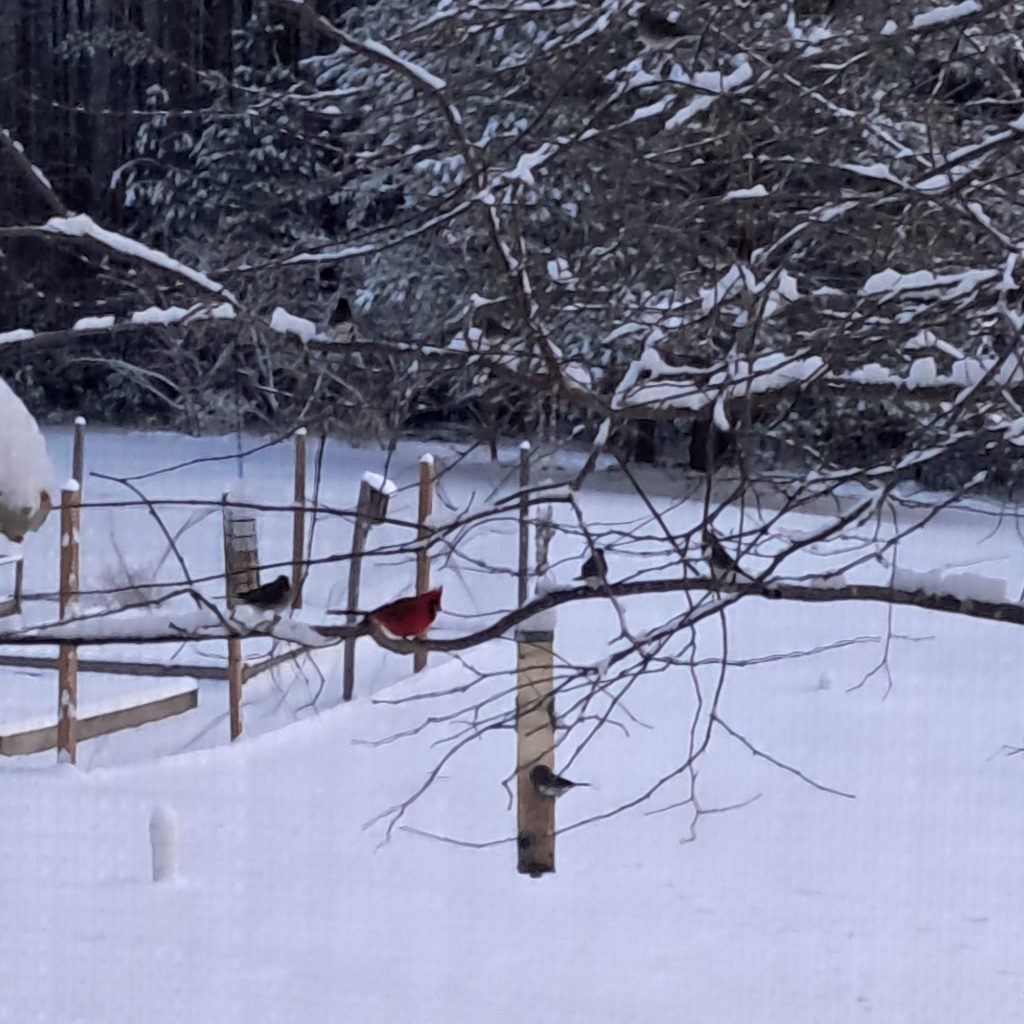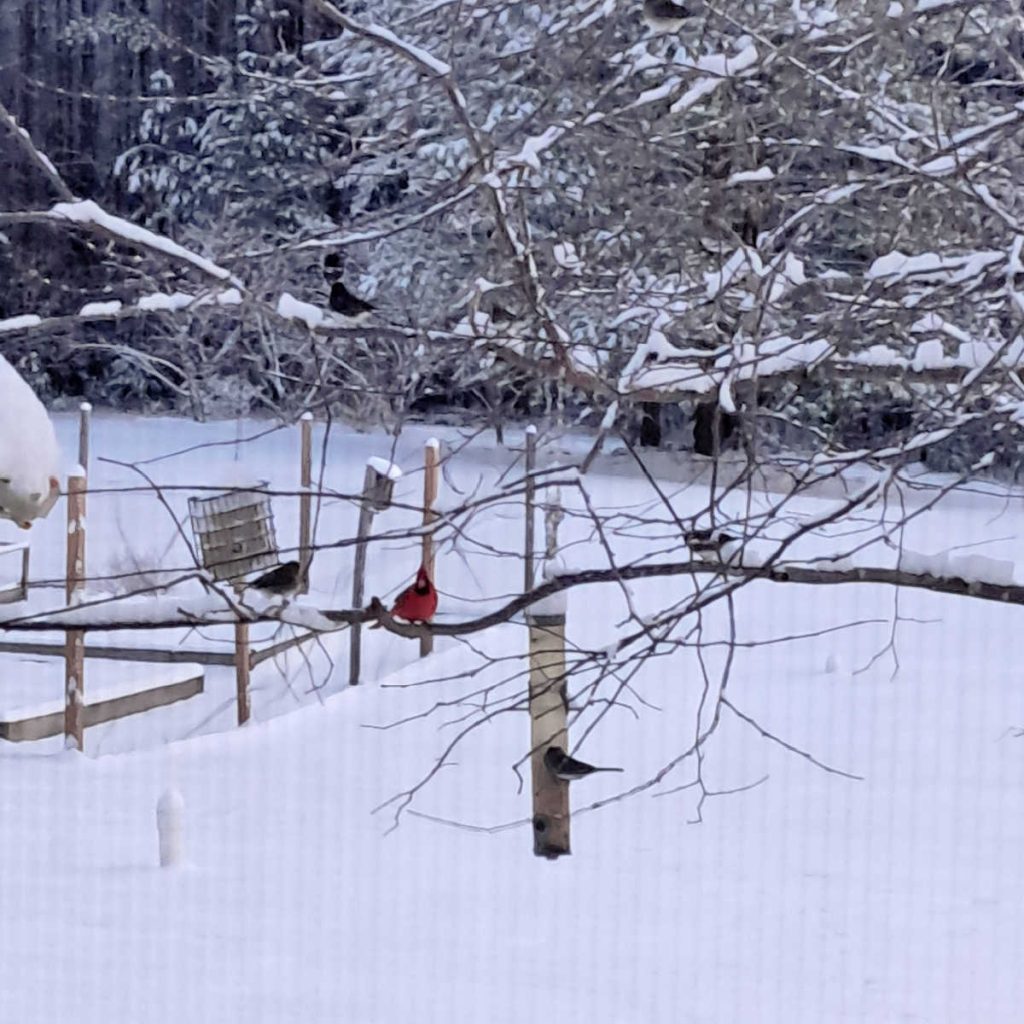Bird feeders added to the garden attract a wide variety of wild birds. Setting a bird feeding station and appropriate bird feeder with enticing food for specific species adds to the fun of backyard birding. Some birds such as hummingbirds require nectar or flowers that produce sweet nectar. Others such as cardinals, Blue Jays, and other colorful birds are seed eaters. Still others such as woodpeckers enjoy suet, a mixture of fat and seed, which provides them with higher protein and fat content that they would normally get from the insects they eat.
Why Feed Birds?
Attracting wild birds to the backyard garden is not only fun, it also helps you keep your insect population down. Many birds will also eat those pesky mosquitoes, flies, and other garden pests. Choosing the best feeder for the birds in your area entices wild birds to the backyard garden. Keep your feeder filled from autumn through spring, and be sure to place it where you can sit in comfort and enjoy it!
Where to Set Up a Bird Feeding Station
Hanging feeders come in many sizes, shapes, and materials. Many look like little birdhouses with a roof, a center “house” portion to hold the seed, and a tray underneath. Gravity pulls the seeds down through the center portion as the birds eat. You can use an economical seed mixture containing millet, thistle, nyjer, and sunflowers in any hanging feeder with good success.

Stay clear of window bird feeders that attach to window glass using suction cups. The suction cups never hold them for long on the windowsill as the weight of the seed and the birds landing on the feeders pull them right off the window. You’ll spend more time hanging your feeder than enjoying the birds.
Tube Feeders for Bird Seed
Tube feeders are made from clear, heavy-duty plastic. They can be of any size but consist of a long cylinder or tube of plastic with holes in the sides rimmed with metal and metal perches. A metal bottom with a cork-shaped cleaning port and a metal cap that slides off the top complete the feeder. These feeders are ideal for more expensive brands of seeds and for feeding specific types of birds. Finches, Pine Siskins and other small birds flock to tube feeders filled with thistle and sunflower seeds.
The following are affiliate links. We are a participant int he Amazon Services LLC Associates Program, an affiliate advertising program designed to provide a means for us to earn fees by linking to Amazon.com and affiliated sites. Thanks for being a part of Home Garden Joy!

Invest in a good quality tube feeder such as one made by the Droll Yankee company. Higher quality tube feeders use special metal alloys that do not freeze and are easier on the birds’ feed in winter months. They’re also easier to clean. I prefer tube feeders and have two, one large and one small. I fill the large one with an economical seed mixture and the smaller one with sunflower seeds. Any seeds knocked out of the feeder to the ground attract ground feeders such as mourning doves, providing me with a nice variety of birds.
Suet Bird Feeders
Birds need some protein and fat, especially in the winter months. Suet provides both. Commercial suet blends made from beef or mutton fat are sold in blocks or cakes. A suet feeder is a simple metal cage that holds the commercial block of suet.
Many suet blocks also contains nuts, seeds and berries, and each appeals to different kinds of birds. They’re inexpensive and last for several weeks unless an enterprising squirrel gets a hold of it. I’ve also seen woodpeckers and flickers help themselves to suet, a nice treat in the middle of winter.
Suet feeders are inexpensive, and the metal cages last a long time. The blocks of suet fat hold their shape under about 70 degrees but begin to melt as temperatures rise, so wait to hang a suet feeder until the weather is consistently cold. You can also make a simple suet feeder from pine cones, bacon fat or peanut butter and bird seed.
Tray Feeders
Some species of birds eat from the ground. They peck at the seeds near the ground and do not like hanging feeders, although you may find them on a hanging feeder. A tray feeder is a small tray or box-shaped feeder that is placed on the ground with some seeds in it.
You don’t need to buy anything fancy. I use a clean pie plate left over from a frozen apple pie or some such. I put a big rock in the center to weigh it down. Then I add the seed. That’s it.
You can scatter seeds on the ground too for the same effect as long as you place the seeds in an area where weeds won’t matter. Some birdseed brands do take root and grow grassy-type weeds. Squirrels and other creatures such as mice and rats may also be attracted to tray feeders placed on the ground, so if you go this route do place them far away from buildings and homes. You don’t want to attract all the local wildlife to your home!
Hummingbird Feeders
Hummingbirds are warm-weather birds and migrate to warmer climates, so place your feeders outside from around April to October (or thereabouts, depending on where you live…northern gardeners can put the feeders out a bit later, while southern gardeners should provide hummingbirds with nectar for a tad bit longer.) Plastic and glass hummingbird feeders are available and while both provide satisfactory feeding stations, I’ve found glass ones easier to keep clean.
Cleanliness is the most important aspect of feeding hummingbirds, since the sugar nectar tends to generate mold on the feeder and attract various insects, which have a tendency to get into the feeder and drown. Hang your hummingbird feeder near a porch, deck or window to enjoy the antics of these tiny jewel-like birds. Hummingbirds are naturally curious, sociable birds, and many will come as close as they dare to check out the strange “birds” watching them!
Backyard Bird Feeding Station
Once you’ve created a backyard bird feeding station, you may want to plant flowers and shrubs that birds love for year-round nesting and feeding sites. Shrubs such as holly, beauty berry, black berry and other berry bushes provide food for many species.
Flowering shrubs such as azaleas and plants such as morning glory vines provide food for hungry hummingbirds. Even evergreen shrubs offer attractive hiding and nesting sites for wild birds. Backyard bird sanctuaries provide a welcome respite for migrating or local birds, and will provide you with hours of fun.




